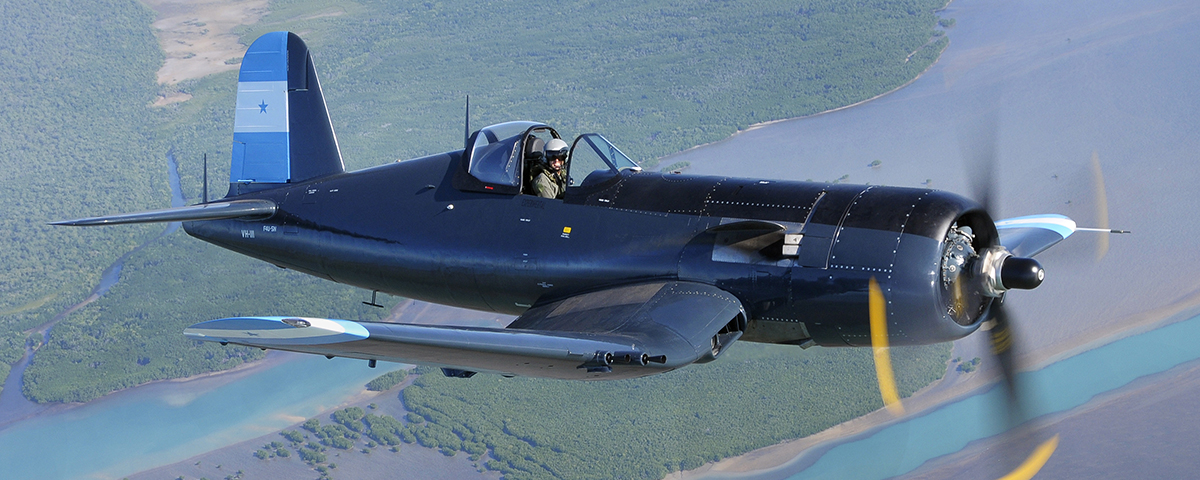Some of the most unusual Corsairs in the world are the two dozen that participated in the last-ever air war involving piston-engine fighters, during the July 1969 “Soccer War” between El Salvador and Honduras. (The two air forces had a total of 30 Corsairs on the books, but not all were operational.) The weeklong war erupted after, though not because of, riots at World Cup semifinal matches between the two countries. Honduras lost the soccer semis but kicked butt aloft. One Honduran Vought F4U-5N, FAH 609, shot down two Salvadoran Goodyear FG-1D Corsairs and a Cavalier-modified P-51D Mustang for the only confirmed aerial victories of the war.
Honduras sold off its scrapped Corsairs in 1978, and the boneyard was picked over by warbird collectors and restoration shops. The reconstructed airplane includes parts from at least two Soccer War F4U-5Ns—probably FAH 603 and FAH 608—and possibly others as well. It has been painted as 603, since the best information is that the wing and fuselage center section and the aft fuselage came from that airplane. Confusion arises because nobody was paying much attention to dataplates when the Honduran scrapyard was originally harvested, and at least one plate was illegible in any case.
The “project,” as such parts collections are optimistically called, eventually ended up in the hands of Walt Disney Studios, which bought it as barter for a deal with the Royal New Zealand Air Force. Disney was making The Rescue, a film about a group of teenagers freeing their Navy SEAL fathers from a North Korean prison. The RNZAF traded Disney the use of one of its air bases and some A-4 Skyhawks for the film. The Corsair was to be restored by the RNZAF Museum as an F4U-1, which the Kiwis operated during World War II, but was instead acquired by Australian warbirder Graham Hosking in trade for a rare Merlin-engine, unrestored P-40F. Hosking had the Corsair rebuilt by Aerotec NT, a well-known Darwin restoration shop, as FAH 603.
It bears pointing out that this reconstruction is another example of why even the rarest warbirds will never have more than a small fraction of the value of great vintage automobiles. (The best classic cars change hands for $30 million and more.) The one thing warbirds lack, except for a few original examples in museums, is provenance: solid proof of their origin, history and ownership. Even now, collectors are arguing about what “FAH 603” actually is and how it came together.
Originally published in the January 2015 issue of Aviation History. To subscribe, click here.





